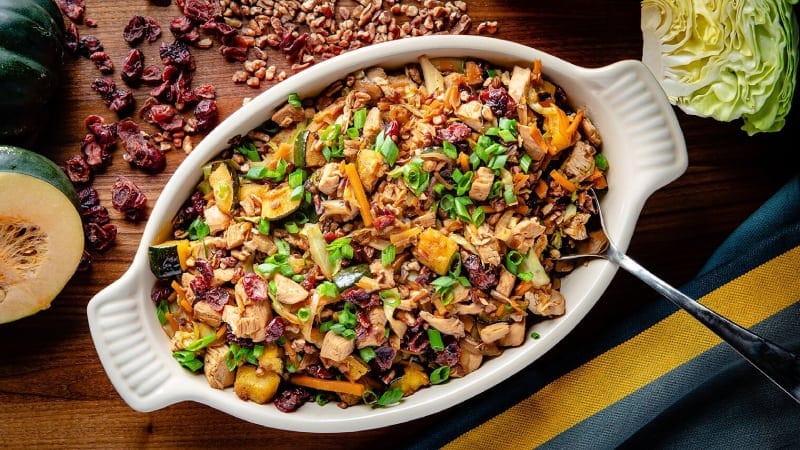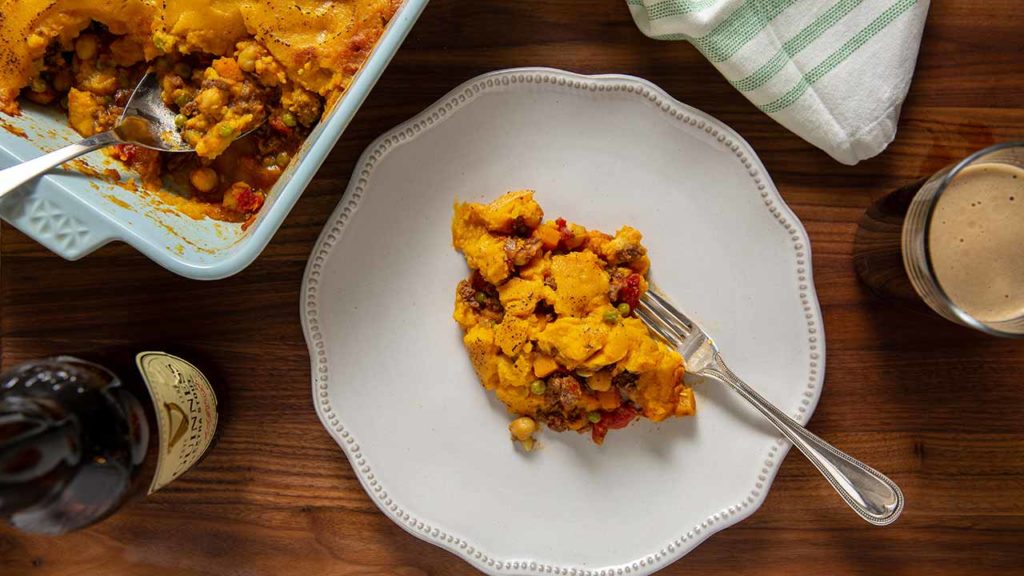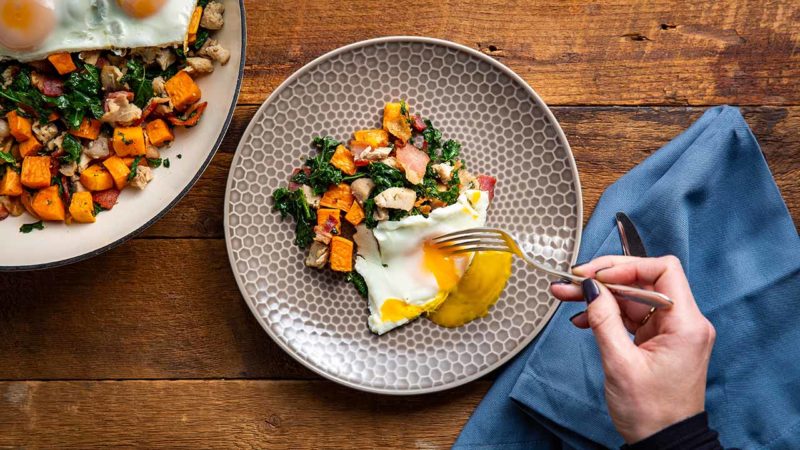Last Updated on March 25, 2024
You made a gigantic family feast, and now you’ve got lots of leftover turkey, chicken or pot roast. You hate wasting food, but you can’t stand to eat the same meal over and over again. Plus, there’s a turkey carcass or a pile of bones to think about.
The good news is, with some creativity and know-how, you can use up all of that meat and prevent food waste, and enjoy every bite. Bonus: You’ll save money, too.
Transform Leftovers into New Meals
Did you roast a massive turkey or whole chicken and now you’re completely bogged down with leftovers? Did your pot roast make more servings than you expected?
Of course you can pile hunks of last night’s roast beef on a sandwich and call it a day. But with just a few pantry ingredients, you can actually create new culinary experiences that transform those leftovers into something special.
If you have leftover chicken or turkey, try these recipes:
- Leftover Turkey Curry Soup
- Autumn Leftover Turkey Stir Fry
- Leftover Turkey Hash
- Tarragon and Apple Chicken Salad

If you have leftover beef roast or steak, try these recipes:

Another Option: Freeze Your Leftovers
You already know you can freeze raw meat, but did you know you can also freeze it fully cooked? With a few smart tricks, you can freeze your leftover pot roast or rotisserie chicken, and use it to streamline busy weeknight meals.
The best time to freeze your leftovers is right after cooking them, for quality and safety reasons. Once it’s cool:
- Separate the meat from the bones, if there are any.
- Portion the meat and store it in heavy-duty, freezer-safe Ziploc bags. (You may choose to freeze it in single-serve 4- to 5-ounce servings, 8-ounce servings, or another amount, depending on your needs.)
- Before freezing, write the type of meat, any details about how it was cooked and/or seasoned, and the date on the bag. Use a heavy marker that won’t run.
- If there’s any cooking liquid, ladle some into the bag to prevent freezer burn. Be sure to not overfill the bags; the liquid will expand as is freezes, so make sure there’s space for that.
To use your leftovers, thaw them in the fridge overnight and reheat in the oven or on the stovetop. If you’re transforming them into something new, heat them according to the recipe’s instructions.
Finally, take care to manage your freezer inventory. If you already have meat frozen, bring it to the top before adding the new leftovers. Use up older items first.
What to Do with Bones
Enjoy the marrow
After a meal, bones are often discarded as waste. But some, like beef bones, and those of game animals like deer, elk or caribou, house within them a succulent substance known as bone marrow. When roasted, it’s rich and luscious — plus, it’s healthy, with lots of collagen and B vitamins.
If you cook a bone-in roast or something like beef shanks, you might just be able to enjoy the succulent marrow as part of your meal. You’ll find it within the shank bone, and while it can be a tad tricky to pull it out, its buttery-smooth and rich flavor is worth the effort. Spread it on some toast as an accompaniment to the meal, or cover and refrigerate it and fold it into ground beef for the best burgers ever.
If you’re really interested in using up every part of the animal (and eating some insanely good marrow), you can also buy marrow bones at a butcher. Ask the butcher to “canoe” the bones so the marrow is exposed. Season with salt and place a sprig of thyme or rosemary on top, then roast or grill. The marrow makes a decadent appetizer served with toasted sourdough bread.
Make broth
You can make broth from any animal’s bones, and the only difference in preparation between bone broth and traditional broth and stock is the length of time you spend cooking the bones. All meat broths and stocks combine water, meat bones, and often vegetable scraps and seasonings for flavor.
Bone broth is cooked for many hours—often a day or more—to leach out the collagen in the bones, which offers a host of health benefits.
Broths and stocks have many uses in the kitchen; they’re an obvious go-to for soups and stews, and you can sip it as a healthy snack or breakfast. Use broth to add flavor to rice and other cooked grains, or as part of a flavorful braising liquid for your favorite roasts.
If you don’t have time right away to make broth out of the chicken carcasses or beef bones you have left over from a meal, wrap and freeze them. Save your veggie scraps, too, and throw them in when you make your broth. It will be nourishing and delicious, and you can feel good about using up all of those leftovers.



